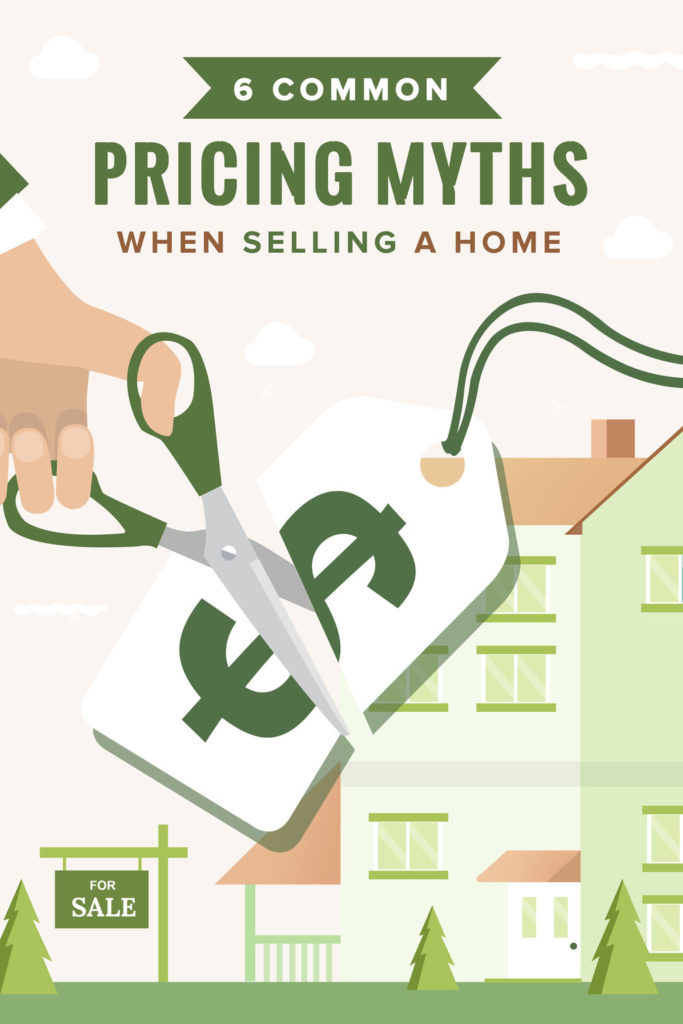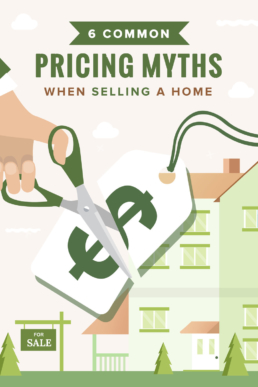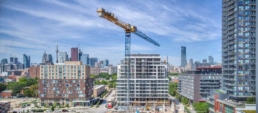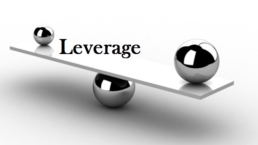Stop Believing These 6 Common Pricing Myths When You Sell Your Home
When you put your home on the market, the one aspect that usually comes to mind is profit. Without a doubt, every seller's main goal is to sell their home for the best possible price. However, in an effort to get the best deal possible, many sellers fall prey to myths about home pricing that don’t reflect the current real estate market.

Setting an asking price for your home will never be a walk in the park. But coming up with an accurate number can give you the biggest advantage. It can mean the difference between quickly getting an offer and risking your home to sit on the market for months, losing the interest of many potential buyers.
So if you want to get the most out of your home sale, disregard these most common myths about pricing a home and start your journey with some realistic expectations!

But here's the reality: getting an offer (or offers!) in the first few days most likely means your home was priced accurately and competitively, which attracted multiple buyers. Your home has the right price on the right market that’s why you received multiple offers even in a short amount of time.

However, that’s not how real estate works most of the time. The longer your home stays on the market, the worse the offers could get. Or maybe you’d get none at all. This is because homes sell for the most money when they are on the market for less than 30 days. According to the NAR 2018 Profile of Home Buyers and Sellers, recently sold homes were on the market for a median of three weeks. When a home has taken so long to sell, buyers will start to wonder what is wrong with it. They may assume that it was priced too high, or that there are issues with the property itself.


Your realtor knows that negotiation is very important in real estate, so trust their experience in this matter. They will price your home appropriately from the beginning but will make sure there’s enough wiggle room so you can still get what you want out of the sale.

To get an idea of which upgrades yield the biggest return on investment, check out the 2018 ‘Cost Versus Value’ report by Remodeling Magazine. For instance, you can expect to get back only 56% of the costs of an upscale bathroom remodel. Meanwhile, the projects with the biggest return include a garage door and entry door replacement.

Top 12 Considerations Any Pre-Construction Buyer Should Know
The Pre-Construction Buyer Guide

The downtown Toronto resale condo market has been a real challenge for those looking to purchase a condo. Especially for both end-users and investors alike, this has been the case. Because of low inventory and continual bidding wars, many investors and first-time home buyers are turning to buying pre-construction versus resale. While buying pre-construction is both exciting and lucrative, it’s a far more complex process than buying resale. There are many common pitfalls to avoid. That’s why it’s important to know what to look out for as a pre-construction buyer.
With the Toronto real estate market, there are many things to think about when it comes to pre-construction. From my experience in selling pre-construction development projects on behalf of developers and assisting hundreds of clients through the process of acquiring pre-construction properties, there are a number of need-to-know’s. Before proceeding with a pre-construction condo purchase, here are 12 considerations you should be aware of.
1. Know the Developer
When looking at pre-construction, you are essentially purchasing something that hasn’t been built yet. That’s why you need to do your due diligence and research the developer. There are always risks to consider when buying pre-construction. However, those risks can be mitigated when you choose to buy from a reputable developer – one who has a great track record. Research with these questions in mind:
•How long has the developer been in business?
•What were their past projects?
•Do they have a good reputation in dealing with their purchasers?
•What is the quality of their work?
Simply put, you never want to buy from a developer who’s on their first project or one with a bad reputation.
2. Location, Location, Location
It’s a common saying in real estate, that it’s all about location. Looking at the Toronto real estate market, this is especially true. When purchasing a condo that may not be completed for 3 to 5 years, your ability to see into the future becomes even more magnified. Ask yourself:
•Is the area gentrifying?
•Will there be transit or any large infrastructure projects?
•What is the access to parks, coffee shops, and restaurants like?
•Will this area or submarket outperform the overall Toronto market?
These are all important investment and lifestyle considerations to think about as a pre-construction buyer.
3. The Cost of Amenities
It’s important to consider, “what are the amenities and the costs associated”? In reality, most residents don’t really use the amenities available to them. And, over time, amenities can cause maintenance fees to rise, which in turn increase monthly carrying costs. With this, these fees can put downward pressure on appreciation, especially as buildings begin to age. Although a state of the art gym and infinity pool look great on a sales brochure, the question any investor should be asking is, “how will this impact my ROI”? Similarly, as the end user, you should be asking, “will I actually use these these amenities more than once a year to make the added costs worth it”? While every pro-forma and individual will look at this differently, it is nonetheless, important to consider.
4. Get a Good Look at the Floor Plan
It’s paramount that you choose a good floor plan. Your choice of floor plan can be a make or break decision for your investment or future home. Especially as a pre-construction buyer, purchasing from a floor plan can be difficult. So, think about some of these considerations:
•The best condos are the ones that have the most natural light.
•Wide and shallow floor plans are superior to long and narrow ones, which often tend to be darker.
•Does the master bedroom have a door?
•Are the ceilings stipple?
•Is a kitchen island or option to have one available?
•Will you be able to hookup a gas BBQ?
Envision what this will look like from an investment perspective – whether that’s for the eventual tenant or buyer, or as a future home.
5. The Deposit
When acquiring a pre-construction property, the deposit (typically 20%) is spread out over time. While it can vary, it’s usually broken down into payments of 5% across a timeline like so:
•30 days
•90 days
•365 days
•And then, the final 5% on occupancy (which could be 3 to 5 years away, presuming you purchased at launch)
Generally, price isn’t negotiable. In some instances, deposit structure can be pushed out, which can be helpful to an investor looking to preserve cash flow or to a first-time home buyer on a budget.
6. The 10-Day Rescission Period
By law, when you purchase a new home in Ontario, you have what’s known as a 10-day cool off period. This means, from the time a purchaser receives an executed copy of their agreement from the developer, they have 10 calendar days in which they can walk away from the agreement with no recourse. This law is in place to ensure that buyers aren’t pressured into a sale at a showroom. In other words, it gives you time to “cool off” and do your own soul searching and due diligence before firming up.
We always highly recommend that you do most of, if not all, your due diligence and soul searching prior to signing an Agreement of Purchase and Sale. Otherwise, your 10-day rescission period could be a fairly traumatic experience full of second guessing yourself. It’s always best to objectively evaluate an opportunity before you are fully vested into it.
7. Hire a Real Estate Lawyer that Specializes in Downtown Toronto Pre-Construction Condos
A new home Purchase and Sale Agreement is a very thick document. Besides this, signing on for a new home can be quite intimidating! While fairly standard, these agreements are written by lawyers and can be somewhat one-sided to favour the developer. It cannot be stressed enough, how important it is to have a real estate lawyer – one that specializes in this line of work – to review the documents for you during the 1o-day rescission period. An expert lawyer in Toronto pre-construction will know what to look for, where the anomalies are, and what in the contract is up for negotiation.
Furthermore, these lawyers have the experience to guide a pre-construction buyer in the right direction. They will be able to walk you through the document and outline your commitments and closing costs. In fact, the closing costs – including developer charges and taxes – can be upwards of $75,000. And, since you can’t roll these costs into a mortgage, it’s important to be aware of what could be coming down the pipeline in 3 to 5 years, should you decide to move forward.
8. Understand the Assignment Clause and Right to Rent During Occupancy Period
The right to assign means that you, as the purchaser, have the right to sell your contract to another buyer prior to occupancy. This is beneficial to have as part of your agreement. It gives you the option to sell the property so that you’re not locked in until close. However, make sure to read the agreement fine print for any limits to your ability to assign the property – something that should be reviewed with your lawyer. With this, check that you have the contractual right to rent out your property during the occupancy period, as in many instances, the developer will not allow for it. This condition is important, even if you are intending to live in the condo since many things can change over a period of 3 to 5 years.
9. Expect Condo Maintenance Fees to Rise
As a pre-construction buyer, you should keep in mind that the developer is making assumptions on what the condo budget could be like once the building is complete. More often than not, the developer is incentivized to make these projections appear as low as possible to appeal to a prospective purchaser (like yourself). In reality, upon completion, the condo corporations may find themselves underfunded and because of this, increases to the monthly maintenance fees result. Any investor or end-user running a pro-forma should always take this into account.
10. Think About Interim Occupancy
The interim occupancy period is when you get the keys and possession of the condo. But, you do not actually own the property until the building registers and ownership transfer from the developer into your name. Another key point: this is when your mortgage kicks in. On average, the interim occupancy period can take from 3 to 9 months. During this time period, you are paying what is known as a “fantom mortgage”. This consists of interest on the principal owning plus maintenance fees and property taxes to developer. And, this occurs on a monthly basis until the building registers. Furthermore, during the interim occupancy period, you will not be making any mortgage payments on your principal.
11. Factor in Closing Costs
There are a lot of costs to consider as a pre-construction buyer. Specifically, these are costs that are due on close and which are not on the developer’s price list or disclosed in their marketing material. It’s imperative that you have a qualified lawyer review all these costs so that you can properly evaluate the opportunity. What’s more is that you’re not taken off guard when the property closes 3 to 5 years from now. The average closing costs can range from 2 to 4%. These costs include, but are not limited to:
•Development charges
•Land transfer taxes
•Utility connection fees
•Education levies
•Park levies
•Reserve contributions
•…and, the list goes on.
The moral of the story is, don’t get caught off guard! Know your costs and what can be capped at the time of purchase.
12. The HST Rebate
The HST rebate is not always clearly explained at the time of purchase. So, it’s important to understand that HST (unlike resale) is applicable to all new home purchases. As a pre-construction buyer, if you are an end-user (meaning, you are going to live in the condo), the developer will pay HST and will, in turn, have the right to apply for the rebate. If you are deemed to be an investor, you will have to pay the HST owing and have the right on your own behalf to apply for the rebate. You should speak to your lawyer prior to purchasing or before going firm, so that you are clear on how this could financially impact you on closing.
Pre-Construction Buyer Questions?
As you can see, there are many considerations to be taken prior to purchasing a new home, especially as a pre-construction buyer. This is a big purchase! So, there’s one more thing to consider – make sure you have the right team behind you to help you ask all the right questions (and answer them too). The Townsend Team knows pre-construction, and we can be your team.
Michael John Lau, Salesperson
The Townsend Team Real Estate Network
Century 21 People’s Choice Elite Realty Inc.
Direct: (647) 308-9000 | Office: (416) 238-9667
The Power of Leverage
Did you know that more millionaires are created through real estate than any other form of investment? How do they do it? For starters, they embrace the power of leverage.
Many people hate or fear debt, but by doing so, they are denying themselves one of the greatest resources available to create wealth. Smart investors know that not all debt is bad – it just depends on what you do with it.
Canadian banks have been financing the purchase of real estate for many years, with the ‘security deposit’ being the property itself. In some cases, they have even financed up to 100%. Why? These notoriously conservative institutions are fairly sophisticated in protecting their funds, and they know through experience that there is no better security than real estate for their loans.
The real advantage of having banks behind your initial investment is that you can invest more in the first place, enabling real estate to produce higher eventual returns than other forms of investment.
Using leverage to finance your investments is one of the key strategies for maximizing your returns. Leverage can substantially reduce the time required to reach your financial goals. For example, investing $20,000 in a GIC that has an interest rate of 2% per annum would yield a return of $400 per year. If you were to take that same $20,000 and use it as leverage to purchase a $100,000 property, assuming the same 2% growth on your new investment value of $100,000, you would get a gross return of $2,000. Which would you prefer?
This is just the beginning of building your real estate portfolio. In the future, you can refinance and leverage the built-up equity into a down payment to finance other properties, thus starting the cycle over again as your equity continues to rise.
Another advantage of only putting down the minimum down payment is that the interest on the mortgage for your income property can be deducted from your taxes. If you put 25% down on a rental property, the bank finances 75%, which means much better returns than paying in cash. Using the lowest down payment and longest financing terms should keep cash flow steady as you build equity.
Now more than ever, investors are taking advantage of the cheap cost of money to build their real estate portfolios. The beauty of real estate and leverage is that the tenant pays off your mortgage for you, eventually leaving you with a mortgage-free property that will continue to generate cash flow. Can you imagine if you owned 10 properties with the mortgage paid off and the tenants paying you $1,000 rent each month? That’s $10,000 a month of passive income coming to you forever. Smart investors are achieving this because they’ve taken the time to learn how to use the power of leverage.



